Are you a Quiet Speculation member?
If not, now is a perfect time to join up! Our powerful tools, breaking-news analysis, and exclusive Discord channel will make sure you stay up to date and ahead of the curve.
The end of the year is approaching, and with it a slowdown in competitive Magic. In fact, GP Columbus was the last Modern event of the year. As such, it is the final opportunity to look at the metagame before 2020's SCG Columbus, so GP Columbus provides extremely important data. It not only defines the metagame for more than a month, but could influence Wizards' December 16 banning announcement.
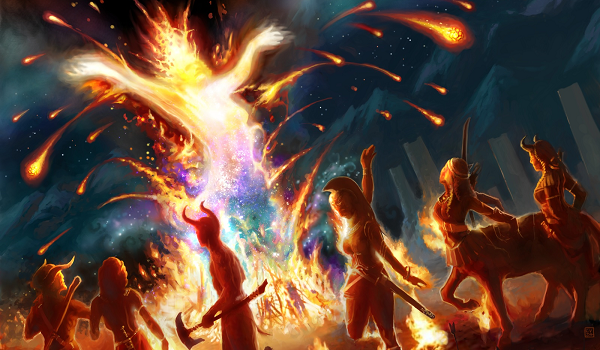
Still, even if the data shows that there really is a problem in Modern, I wouldn't expect Wizards to take action anytime soon. Wizards prefers to wait and see with Modern (see also: Hogaak), and without major events in December, I doubt there's any reason for them to change things up. If something is getting axed, I'd expect it to happen in February at the earliest.
Conversion Conversation
This analysis is going to be different from previous ones. ChannelFireball's given us both more and less data than StarCity's usual. There's more in that I have some Day 1 data to work with, allowing me to more accurately judge how well each deck did over the course of the tournament. However, only 10 decks were reported for Day 1, which limits how much I can do. The Day 2 data was also that limited initially, though more was provided later.
| Deck Name | Day 1 Total | Day 1 % | Day 2 Total | Day 2 % | Day 1-2 % Difference | Conversion Rate % |
|---|---|---|---|---|---|---|
| Eldrazi Tron | 38 | 5.70 | 12 | 10.08 | 4.38 | 31.58 |
| Sultai Whirza | 67 | 10.10 | 16 | 13.44 | 3.34 | 23.88 |
| Mono-Green Tron | 38 | 5.70 | 9 | 7.56 | 1.86 | 23.68 |
| Humans | 27 | 4.00 | 6 | 5.04 | 1.04 | 22.22 |
| Grixis Death's Shadow | 48 | 7.20 | 10 | 8.40 | 1.20 | 20.83 |
| Sultai Death's Shadow | 25 | 3.7 | 5 | 4.20 | .50 | 20.00 |
| UW Control | 26 | 3.90 | 5 | 4.20 | .30 | 19.23 |
| Jund | 40 | 6.00 | 7 | 5.88 | -.12 | 17.5 |
| Burn | 54 | 8.10 | 7 | 5.88 | -2.22 | 12.96 |
| Amulet Titan | 28 | 4.20 | 3 | 2.52 | -1.68 | 10.71 |
Since I haven't dealt with conversion rates before, I will explain the table. All the reported Day 1 and Day 2 populations and percentages are the first four columns. I then took the Day 2 percentage and subtracted the Day 1 to get the fifth data column. This column may be seen as the change in proportionate representation. Dividing each deck's total Day 2 population by their Day 1 share yields the conversion rate.
Conversion rate doesn't really mean anything in a vacuum. There are many ways to look at the data, and the conclusions reached depend on how it is done. The table shows that Jund had a conversion rate of 17.5%. That number offers a starting point for assessment purposes, but necessitates context. For instance, If Jund's expected conversion rate was only 5%, then Jund overperformed; if instead 20% was expected, Jund slightly underperformed.
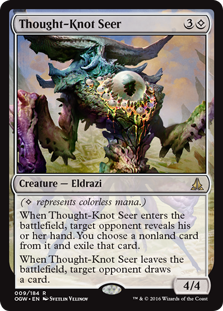 I can't directly compare the observed conversion rates to previous events, but ChannelFireball has provided a workaround. The overall conversion rate for GP Columbus was reported as 18.9%, with an expected conversion rate for any deck being 15%. We can therefore use these as benchmarks for performance.
I can't directly compare the observed conversion rates to previous events, but ChannelFireball has provided a workaround. The overall conversion rate for GP Columbus was reported as 18.9%, with an expected conversion rate for any deck being 15%. We can therefore use these as benchmarks for performance.
I've provided the fifth column as an alternate viewpoint. Rather than rely on outside information, it measures each deck against itself. If every deck is equal, then each deck should have an equal chance to appear in the actual sample in proportion to its population, per statistical sampling. Thus, if a deck started out at 5% of the overall metagame, the expectation is that 5% of that population would make Day 2. I'll measure the scale of deviation from that expectation.
Significance: A Win for Eldrazi Tron
By any metric, Eldrazi Tron overperformed. It had a very high percentage deviation and conversion rate, and is well above either expected conversion rate. Using the overall conversion rate, Eldrazi Tron was 12.68% over. If using the expected rate, it's 16.58% over expectation. That Eldrazi Tron did well makes sense, given Death's Shadow's return and Chalice of the Void's impact on Urza decks. It appears to have been the best choice to make Day 2 given the field, which indicates that it is well positioned in the metagame.
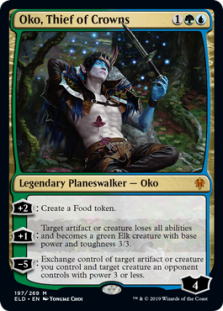 Sultai Whirza has a much lower conversion rate than Eldrazi Tron (just 4.98% above tournament average and 8.88% over baseline), but there's no statistical difference between Sultai's rate and Gx Tron's rate. Whirza did better in the proportionate ranking, but that's not surprising. It's the supposed best deck in Modern, if previous results are any indication, and I expect that many of the best players were on the deck. Just like in Atlanta, win rates are boosted by pilot quality. Given the hype around Urza decks, the fact that Urza statistically overperformed isn't really news. The fact that it didn't by much is, however.
Sultai Whirza has a much lower conversion rate than Eldrazi Tron (just 4.98% above tournament average and 8.88% over baseline), but there's no statistical difference between Sultai's rate and Gx Tron's rate. Whirza did better in the proportionate ranking, but that's not surprising. It's the supposed best deck in Modern, if previous results are any indication, and I expect that many of the best players were on the deck. Just like in Atlanta, win rates are boosted by pilot quality. Given the hype around Urza decks, the fact that Urza statistically overperformed isn't really news. The fact that it didn't by much is, however.
Sultai Death's Shadow, UW Control variants, and Jund all have proportional scores small enough that I'd call it even. Their Day 2 population was in line with their Day 1. If you look at their conversion rates, the picture darkens. Sultai and UW are just above the line for me to say they overperformed, but it's narrow enough that I wouldn't say that with confidence. Jund underperforms compared to tournament average and over compared to baseline. I'd explain these results as middle-of-the-road decks having middle-of-the-road results. They're winning proportionate to their merits, and not any particular positioning advantage.
All that being said, there's no way to see Amulet Titan's result as anything but poor. It was not the most popular starting deck, but it nonetheless limped into Day 2. Considering how popular it has been in the SCG Day 2's, this is a very significant result. I had speculated that Amulet was just a popular deck on the SCG circuit, not a good one, and this poor showing at a non-SCG event backs up that speculation. The volume of Damping Spheres may be to blame, but Whirza decks had been tutoring for those previously, and Amulet did well. (Burn also did poorly, but that's a very typical result, so I wouldn't read too much into it.)
Limitations
Now it's time to doubt the data. The first source should be the population size. GP Columbus only had about 650 players, which is about half of what GP Dallas saw earlier in the year. While I can't definitively explain this drop, I suspect timing is to blame. It was set on the weekend before Thanksgiving, and I can't imagine many Americans wanted to travel for a GP only to travel for the holiday immediately afterwards. There was also snow that weekend, which could have kept players home.
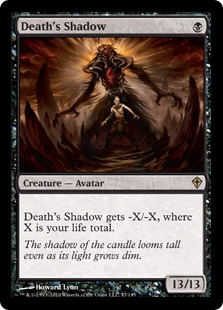 The other problem is with conversion rates themselves. I've never cared for conversion rates before, because they don't always tell the full story. The rates are just successful outcomes over total population, and in Magic, those successes are subject to factors outside the control of those involved. Skill level, in-game variance, and matchup pairings all factor into win rates. When evenly distributed, they don't affect the outcome, which is presumably true for variance and pairings. However, skill is definitely not evenly or randomly distributed throughout the sample, with the higher-skill players gravitating towards the presumed best decks. Luis Scott-Vargas is far more likely to sleeve up Simic Urza than mono-Green Stompy, a choice that in turn boosts Urza's win rate and skews the data.
The other problem is with conversion rates themselves. I've never cared for conversion rates before, because they don't always tell the full story. The rates are just successful outcomes over total population, and in Magic, those successes are subject to factors outside the control of those involved. Skill level, in-game variance, and matchup pairings all factor into win rates. When evenly distributed, they don't affect the outcome, which is presumably true for variance and pairings. However, skill is definitely not evenly or randomly distributed throughout the sample, with the higher-skill players gravitating towards the presumed best decks. Luis Scott-Vargas is far more likely to sleeve up Simic Urza than mono-Green Stompy, a choice that in turn boosts Urza's win rate and skews the data.
The final problem is that of context-light conversion rates. I've pointed to Eldrazi Tron's rate being 12.68% over the event average and 16.58% over the baseline, but what that means in the wider context is unknown. All these rates could be identical to Atlanta's or wildly divergent, but there's no way to know. If the former, there's nothing to see here. If the later, then these are very significant results. Since there's no data to compare, the results should be treated with skepticism, and the conversion rates shouldn't be taken as necessarily indicative of the whole metagame.
Top 32
Only the Top 8 is listed on the official coverage page, and it included two copies each of Sultai Whirza, Burn, Humans, and Tron. That's a rounded and symmetrical Top 8, but there's nothing analytical to be done with only eight results. Channelfireball did eventually post more decks so that I can do some analysis. On their Twitter. In picture form. Which is great for those looking to copy decks, but made it a little harder for me to classify them.
| Deck Name | Total # |
|---|---|
| Sultai Whirza | 6 |
| Burn | 4 |
| Humans | 3 |
| Eldrazi Tron | 3 |
| Mono Green Tron | 2 |
| Bant Control | 2 |
| Bant Snowblade | 1 |
| Devoted Devastation | 1 |
| Crabvine | 1 |
| Landfall Zoo | 1 |
| UW Control | 1 |
| Dredge | 1 |
| Jund Death's Shadow | 1 |
| 4-Color Death's Shadow | 1 |
| Grixis Death's Shadow | 1 |
| Merfolk | 1 |
| Infect | 1 |
| TitanShift | 1 |
For the first time since becoming a deck, Urza actually won the GP. However, I'm not sure that's accurate anymore. The new wave of Sultai Urza decks behave nothing like the original Whirza decks. Where Whirza is a hybrid midrange/prison/combo deck, the Sultai Urza decks of Columbus are midrange-leaning value-engine decks. Brian Coval and his compatriots don't bother with the Thopter-Sword combo or any maindeck prison pieces. They don't even have Whir of Invention (which makes ChannelFireball's decision to classify them as Whirza decks slightly baffling).
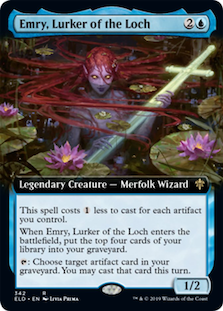 Instead, the deck has the same core of cheap artifacts and multiple engines built around them. Brian can win by infinite card advantage via looping Mishra's Bauble with Emry, Lurker of the Loch, locking opponents down with Mycosynth Lattice and Karn, the Great Creator, or going full Standard Food with Oko and Gilded Goose. Urza's the least efficient card advantage source in all that, useful mostly for his construct token.
Instead, the deck has the same core of cheap artifacts and multiple engines built around them. Brian can win by infinite card advantage via looping Mishra's Bauble with Emry, Lurker of the Loch, locking opponents down with Mycosynth Lattice and Karn, the Great Creator, or going full Standard Food with Oko and Gilded Goose. Urza's the least efficient card advantage source in all that, useful mostly for his construct token.
Therefore, I'm inclined to rename these decks to Simic Oko. Oko, Thief of Crowns is the main reason that there were so many Sultai decks running around. The Bant control decks are Bant primarily for Oko. Ice-Fang Coatl is just a bonus. Death's Shadow decks are stretching primarily for Oko with Once Upon a Time a near second. The appeal of such a flexible +1 ability seems to be enough to justify the stretched mana in decks that otherwise don't need to.
How it All Stands
Despite having the best conversion rate, Eldrazi Tron is nothing special in this Top 32. Calculating Top 32 conversion, it has a 25% rate compared to Humans's 50%. And Humans had two decks Top 8. Burn, meanwhile, did shockingly well compared to its poor Day 2 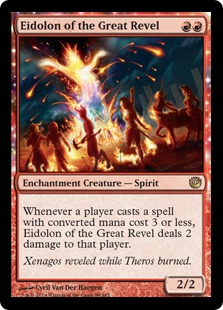 conversion (57.1%) and put two decks into the quarterfinals. Meanwhile, Sultai Whriza, the most popular deck on both days, also has the most decks in Top 32 for a conversion rate of 37.5%. Better than E-Tron; worse than Humans and Burn. That's another reason to be leery of conversion rates: they don't predict the final results.
conversion (57.1%) and put two decks into the quarterfinals. Meanwhile, Sultai Whriza, the most popular deck on both days, also has the most decks in Top 32 for a conversion rate of 37.5%. Better than E-Tron; worse than Humans and Burn. That's another reason to be leery of conversion rates: they don't predict the final results.
With Sultai Whirza being the apparent deck to beat from previous events, the fact that it isn't doing that much better than the other decks is significant. While I'd previously heard talk of Urza having Hogaak's level power, these results expose such reactions as wild exaggerations. The more general results that Urza is putting up (high Day 2 populations and Top 8s, but sparse wins) are reminiscent of Izzet Phoenix this time last year. So the deck may be good and very competitive in the metagame, but it's not oppressive or warping. There's no evidence yet that anything needs to be done, as the metagame is changing to accommodate the new cards and establish a new equilibrium.
PTQ Complications
Modern being fine is further reinforced by the other events from GP Columbus. For SCG events I normally also look at the Classic results. For GP Columbus, I also have three Modern PTQ's. If this keeps up, I will keep using them in the future.
| Deck Name | Total # |
|---|---|
| Sultai Whirza | 5 |
| Jund | 3 |
| Dredge | 3 |
| Burn | 3 |
| Grixis Death's Shadow | 2 |
| Affinity | 1 |
| Sultai Death's Shadow | 1 |
| Infect | 1 |
| Storm | 1 |
| Temur Midrange | 1 |
| Elves | 1 |
| Humans | 1 |
| Green Devotion | 1 |
Sultai Whriza may be the most popular deck in this sample, just like in the main event, but it wasn't so successful. The three PTQs were won, in chronological order, by Jund, Burn, and Dredge, and being runner-up for a PTQ is a failure in my eyes. Other than Whirza's popularity, this data bears little resemblance to the main event. Burn remains popular, but Jund had the success that I thought it should and Dredge came out of nowhere. The metagame seems to remain wide open despite the attention on Urza decks.
Bottom Line
While Urza, Lord High Artificer has previously been their focus, I think that the card is becoming increasingly unnecessary in its namesake decks. By moving away from Thopter Foundry and Sword of the Meek, Urza decks have lost their ability to go infinite and to turn mana into threats. Instead, they've moved to a more resilient value-grinding plan. The presumed best deck is evolving to counter the hate being thrown its way, which means that the rest of the metagame will have to evolve as well.
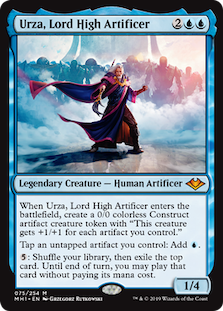 I consider this development is a positive sign. If the Whirza decks from two months ago were still the default deck and largely unchanged, that would signify that Whirza intrinsically preempts attempts to counter it, which is oppressive and dangerous. If the trend continues, then there is no problem, and a ban is unlikely. However, once successful decklists start calcifying for months, that's a clear sign that the metagame is failing to adapt, which is ultimately why Faithless Looting had to go.
I consider this development is a positive sign. If the Whirza decks from two months ago were still the default deck and largely unchanged, that would signify that Whirza intrinsically preempts attempts to counter it, which is oppressive and dangerous. If the trend continues, then there is no problem, and a ban is unlikely. However, once successful decklists start calcifying for months, that's a clear sign that the metagame is failing to adapt, which is ultimately why Faithless Looting had to go.
That Oko is starting to appear in more and more decks is cause for concern. If he becomes too prevalent, we'll be in a situation similar to Standard's. Modern has the tools to contain cheap planeswalkers or outright ignore them, which will hopefully be enough.
What the Future Holds
And that's it for the metagame for this year. It's been a wild one. I hope that 2020 will be less volatile, and less prone to bans. But we won't know until we get there.



